"On Monday I Can Be On A Tractor, And On Saturday I Can Be In China Selling Wine"#
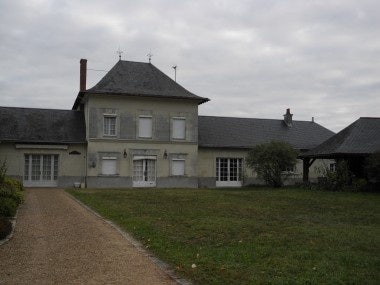
In part two of our three-part look at France's Loire Valley, a wine-growing region that's currently looking to take on better-known areas like Bordeaux and Burgundy in emerging markets like China, we visit three wineries that are combining traditional winemaking techniques with a more modern, global outlook: Château-Midouin, Château de Chaintres, and Pierre & Bertrand Couly.
If you missed
part one#
yesterday, be sure to go back and check out our visits to Gorges, Vix, Rochefort and Montreuil-Bellay.
Day Three: Saumur, Dampierre-sur-Loire, Chinon#
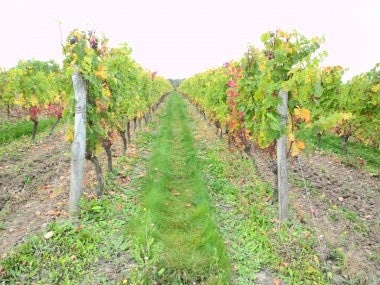
Leaving the historic town of Montreuil-Bellay, on day three of our Loire Valley tour our group headed northeast to Saumur, long famous for its sparkling white wines. Winding through Saumur's centuries-old streets, our guide, Chateau-Midouin head Guillaume Roussy pointed out the many wine cellars carved into the hills on the outskirts of Saumur, where winemakers and merchants have produced and stored sparkling Saumur wines since the 19th century. After a brief tour of the famous Ackerman cellars, where Saumur Brut was produced for over 200 years, we crossed rolling hills and wide-open country to visit one of the two Château-Midouin vineyards operated by Guillaume and owned by his family since shortly before World War II.
Split between two identical vineyards, each roughly 30 hectares (74 acres) in size and growing mostly Chardonnay and Pinot Noir for sparkling Crémant and Cabernet Franc for still white and rosé wines,
Château-Midouin#
produces around 500,000 bottles per year. Founded by Guillaume's wine merchant grandfather in 1950, the winery surrounds a more than 300-year-old house restored in the 1960s and overlooks the vast Loire Valley below. According to Guillaume, the gently sloping hills and relatively chalky soil of Château-Midouin ensure slightly tart and acidic, yet balanced wines, as adequate water runoff from the slopes prevents overwatering of the vines, and the chalk and clay content of the soil creates a less cloyingly sweet white wine with better acidity. To create his sweeter wines, Guillaume showed us a section of his vines that he grows higher than usual, which helps foster more photosynthesis in the grape leaves and produce higher sugar potential in the grapes. Tasting Guillaume's pleasantly tart and acidic Anjou white wines and his crisp sparkling whites and rosés (which he noted were "very popular among Chinese women"), we could see how the layout of his vineyards did make his wines a touch sweeter and more fruity than those of the other wineries on our tour.
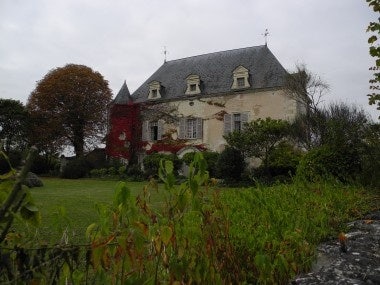
As we left Château-Midouin to tour nearby Château de Chaintres, Guillaume reflected upon what the growing interest in wine in China means for the French wine business. Said Guillaume, despite the challenges inherent in the China market -- spurious wine "importers," dealing with bureaucracy and red tape in customs, a widespread preference for "name-brand" wineries -- he is optimistic about the prospects for smaller winemakers in lesser-known regions like Loire. Much of his optimism stems from his observations on the ground in China since he started traveling to trade shows and events in the country. In only a few years, Guillaume said, potential customers have gone from asking, "What country are your wines from?" to specific questions about terroir, appellation and food pairings. Though markets like the United States are more reliable and developed, with established demand, pricing structures and logistics, Guillaume noted, China is "more exciting and more dynamic."
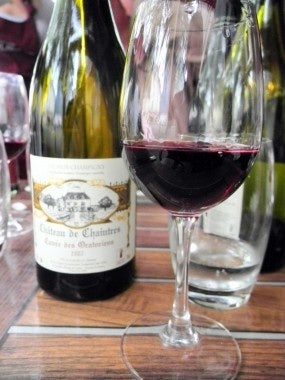
Arriving at
Château de Chaintres#
, a 20 hectare (49 acre) estate located in the small town of Dampierre-sur-Loire, we pulled through an old stone gate to meet director and head winemaker Richard Desouche. Taking us on a tour of the vineyard, Richard told us that the winery was originally established in 1675 by monks, who surrounded the fields with large stone walls -- a feature very unique among French wineries. Family owned since 1938, Château de Chaintres grows nearly all Cabernet Franc, along with a bit of Chenin, producing mostly red wines and limited ranges of white, rosé and sparkling wines. Showing us his vines, Richard said Château de Chaintres is in the process of gaining organic certification, which (in France) takes around three years. Before applying for organic certification in 2010, however, Richard cut out all use of weedkillers in 2007 and insecticide in 2008.
Tasting his surprisingly bold reds and refreshing whites over lunch in the town center, Richard echoed Guillaume's optimism that Loire wines could find an audience in newer markets in places like Asia, where consumers are increasingly willing to try new things. Discussing the proliferation of wine trade shows in Hong Kong and mainland China in recent years, Richard laughed that one of his favorite aspects of the job now is that "on Monday [he] can be on a tractor, working in the fields, then on Saturday he can be in China selling wine." Richard said Château de Chaintres is gaining gradual notoriety in China, helped along by the general preference for red wines that still exists in that market, though he (like many Loire winemakers) thinks women and younger drinkers will see demand for sparkling and still white wine categories skyrocketing in China within the next decade.
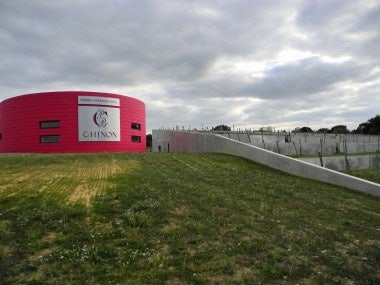
After lunch, Guillaume drove our group to the town of Chinon to visit the eponymous winery owned by father-and-son team
Pierre and Bertrand Couly#
. A winemaking family since the 15th century, the Coulys were unique among the individuals we met on our visit to the Loire Valley in that they recently opened a brand new, modern facility to create and showcase their wines. Built in 2010, with a tasting room opening earlier this year, the P&B Couly winery is, according to Bertrand Couly, meant to combine "the use of modern tradition with old-fashioned techniques."
Pierre and Bertrand Couly produce primarily red wines from Cabernet Franc grapes, the main difference between their three flagship red wines being the type of soil on which the grapes are grown. Additionally, the Couly family produces a tart, light Chenin Blanc, as well as a Cabernet Franc rosé. The Couly vineyard is very much focused on artisanal production, Bertrand told us, with a capacity of around 120,000 bottles per year and a total of 25 hectares (62 acres) worth of vines. Rather than planting in a large square vineyard, what makes Bertrand's wines unique is that his vineyards are grown on a plot of land only 1 kilometer wide but 13 kilometers long. This makes for a diversity of terroir and, in the finished product, flavor profiles. Indeed, as we were given a tasting of Bertrand's wines, the three reds -- one grown on silica and clay-heavy soil, another on a mix of limestone and clay, and the third on pure limestone -- ranged from mildly tannic to crisp and acidic, even though all were fermented and aged in similar stainless steel tanks at the same temperatures.
So, we asked Bertrand, is his winery, like several others in the Loire Valley, looking at increasing exports to China to tap growing demand? Considering his limited production, Bertrand said, not really at the moment. However, he noted, he does understand the importance of this emerging market, and he's leaving it up to the next generation to look into it. We asked him to elaborate.
"We sent our son to study for a year in China before he finished winemaking school."

